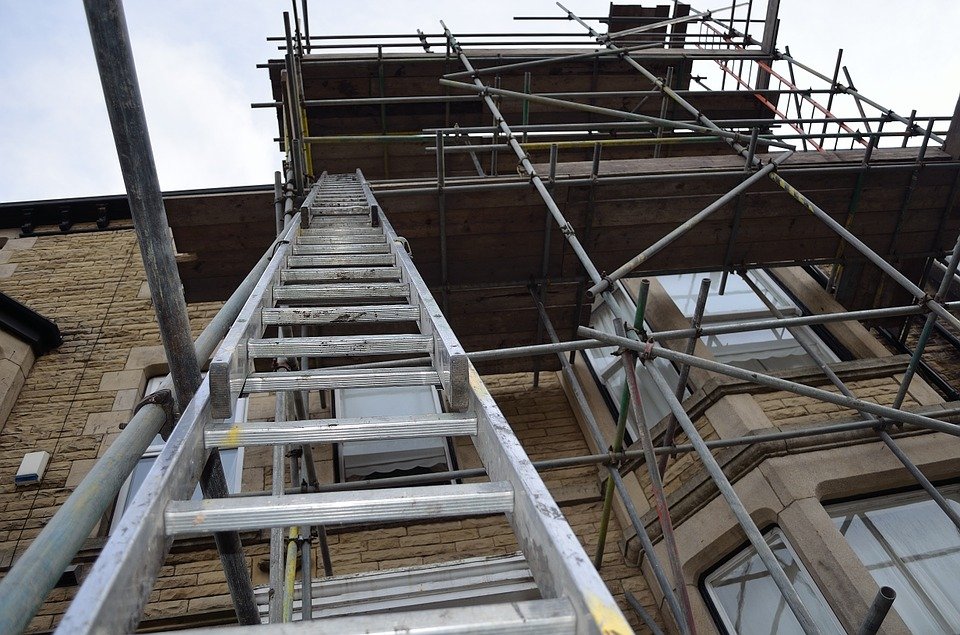Brooklyn Construction Site Accident Lawyer Discusses Construction Safety Training: Help Prevent Deadly Ladder Injuries

Brooklyn Construction Site Accident Lawyer Discusses Safety Training
Construction workers should be aware of safety protocols that can prevent injuries and even save lives.
Safety Tips for Construction Workers Who Use Ladders
Construction workers should never climb up metal ladders without first making sure that the tops of the ladders are far enough away from nearby utility lines. Likewise, the bottom legs of all ladders must be carefully planted on flat, stable land to minimize chances of a fall.
Share the Safety Tips & Follow OSHA Regs
These types of basic safety tips should be shared with all construction site employees during training sessions designed to minimize worker injuries and fully comply with all OSHA (Occupational Safety & Health Administration) regulations.
General Contractors and Construction Company Employers Can’t Assume
Furthermore, employers should never assume that all workers know how to properly use and maintain every type of ladder that may be needed on a general construction site. In fact, the improper use of ladders ranks as one of the Top 10 federal OSHA standards violations.
Here’s a general overview of the types of training information that employers must share to help their workers avoid ladder injuries.
Daily Ladder Inspection Is One of the Key Safety Tips
- Check for ladder damage before ever starting to use one. Look for small cracks, weak rungs or parts that are coming loose. Take the time to properly “tag” any defective ladder so it can be properly repaired before someone else suffers harm on it;
- Make sure all ladder rungs are free of water or any type of wet or slippery substance. You can help prevent this problem by storing all ladders in an enclosed structure when they’re not in use;
- Always make sure that you’re placing your ladder far enough away from nearby power lines or energized electrical equipment that’s exposed;
- When using an extension ladder, be sure all locks are fully engaged;
- Maintain three-point contact with your ladder as you climb up. This simply means that you’re either keeping both hands and a foot – or both feet and at least one hand on the ladder at all times. Never attempt to carry items in both hands while climbing up any ladder;
- Always try to have at least one other worker hold the bottom of the ladder steady while you climb up;
- Never exceed the maximum load rating affixed to any ladder. If you are carrying heavy equipment up on your back, be sure to add that weight into your calculations;
- Always face a ladder while climbing up. Turning around or looking elsewhere can cause you to quickly lose your center of gravity. Also, be sure to climb up the very center of the ladder so you’ll be less likely to cause it to tilt, especially when no one is below, holding it steady.
Common sense must never be ignored when using ladders. Always avoid using one when it’s about to start raining or if you see any lightning in the sky. Other basic ladder safety rules should also be respected.
Construction Safety and Clothing + Footwear
- Always wear rubber sole shoes or standard work boots when climbing a ladder. Never wear heeled boots or sandals;
- Wear close-fitting shirts and slacks. Loose-fitting clothes may get caught on some part of the ladder as you climb up or down, greatly increasing your chances of falling;
- Gloves should be worn whenever practical to give you a stronger grip on the ladder;
- Never try to climb a ladder while another worker is up above. Your added weight could easily cause you both to fall – even if you’re just wanting to quickly climb up and hand the other worker a tool;
- Avoid using a ladder when you’re not feeling well or feeling dizzy due to any medication you’re taking. Simply tell your supervisor that it would be better on that day for you to be the one to stay on the ground, stabilizing the ladder for the other worker.
By carefully following all the safety tips provided above – along with all those covered during your employer’s training sessions — you should be able to handle most ladders without any major problems.
If you’ve been seriously hurt while using a ladder or other equipment on a construction site, be sure to contact your New York construction site accident attorney. We can investigate the facts of your case to see if you may be entitled to obtain additional compensation against the construction site owner and or general contractor in a third party lawsuit – in addition to any other funds you may receive from workers compensation.



